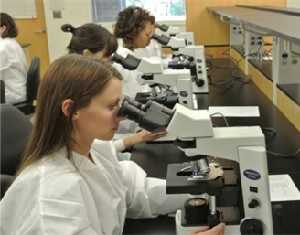Resources and Educational Materials for Health Professionals
CDC’s Mycotic Diseases Branch and its partners offer various educational and training resources about fungal diseases for health professionals.
Medscape Commentaries
As part of a collaboration between CDC and Medscape, these commentaries are designed to deliver CDC’s guidance directly to physicians, nurses, pharmacists, and other healthcare professionals.
- The Unexpected and Troubling Rise of Candida auris
- The Rise in Antifungal Resistance
- Fungal Disease: A Growing Nemesis
- Valley Fever: Diagnosis and Treatment
- Fungal Endophthalmitis: Diagnosis and Treatment
- Fungal Infection Outbreak: What Should Physicians Be Doing?
- Mucormycosis: When to Think Fungal Infection
Continuing Medical Education (CME)
Several CME activities related to fungal diseases are available online.
Fungal Disease Reporting
In some US states, certain fungal diseases must be reported to the state and/or local health department. This table summarizes reportable fungal diseases (blastomycosis, coccidioidomycosis, cryptococcosis, and histoplasmosis) based on state lists of reportable diseases. A disease marked with an “x” indicates it is reportable in that state.
Please check with your local, state, or territorial public health department for more information about disease reporting requirements and procedures in your area.
Educational Materials
Laboratory and Epidemiology Training
-
Training course on laboratory identification of pathogenic molds

- The Mycotic Diseases Branch provides an annual training course on the identification of pathogenic molds. The course is organized in conjunction with the National Laboratory Training Network. To date, over 200 persons have attended these courses. For more information, contact the National Laboratory Training Network.
-
American Society for Microbiology (ASM) –ASM/CDC Program in Infectious Disease and Public Health Microbiology
- ASM/CDD Fellowship Details
- The goal of the ASM/NCID Fellowship is to support the development of new approaches, methodologies, and knowledge in infectious disease prevention and control in areas within the public health mission of the CDC. The program is intended for individuals who either earned their doctorate degree or completed a primary residency within three years of their proposed start date.
-
Epidemic Intelligence Service (EIS)
- The Epidemic Intelligence Service is a unique 2-year, post-graduate program of service and on-the-job training for health professionals interested in the practice of epidemiology. Every year CDC recruits 60-80 persons to enter the EIS and pursue on-the-job training in epidemiologic investigations, research, and public health surveillance. At present, the Mycotic Diseases Branch seeks to recruit one EIS officer each year. For more information and application materials, visit the EIS website.
Infectious Diseases Society of America (IDSA) Clinical Practice Guidelines
Podcasts
- Antibiotic Resistance and Fungus (2017). Dr. David Denning, President of the Global Action Fund for Fungal Infections and an infectious diseases clinician, discusses antimicrobial resistance and fungus.
- Breathing Valley Fever (2014). Dr. Duc Vugia, chief of the Infectious Diseases Branch in the California Department of Public Health, discusses Valley Fever.
-
Think Fungus (2013)
Dr. Mary Brandt, the Mycotic Diseases Branch chief, discusses the impact of fungal infections. -
Death from Fungus in the Soil (2012)
Dr. Shira Shafir, Assistant Professor of Epidemiology at the UCLA Fielding School of Public Health, discusses her study about fungus found in soil. -
Meningitis (2012)
This podcast gives a general overview of meningitis, including what it is, the five types, and the causes. -
Coccidioidomycosis in Arizona 2007-2008 (2010)
This podcast looks at the impact of Coccidioidomycosis, or Valley Fever, in Arizona in 2007 and early 2008. -
Spread of Rare Fungus from Vancouver Island (2006)
Cryptococcus gattii, a rare fungus normally found in the tropics, has infected people and animals on Vancouver Island, Canada.
- Page last reviewed: January 25, 2017
- Page last updated: August 31, 2017
- Content source:


 ShareCompartir
ShareCompartir